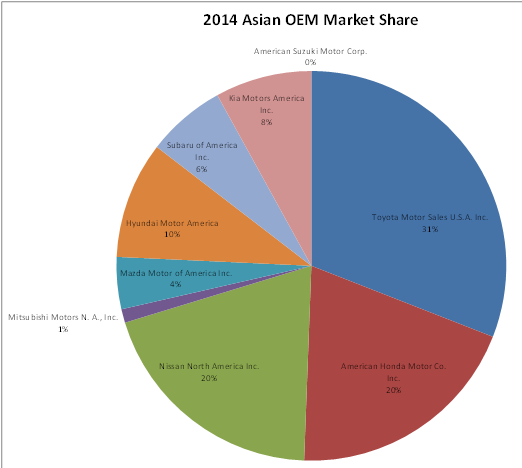by Ruggles - from my Auto Finance News column
Drill Baby Drill has finally worked, but only because OPEC cooperated, at least temporarily. Until just recently, increased U.S. production hasn’t resulted in low fuel prices at the pump. There is no good reason for global oil market prices to have stayed so high for so long in the face of dramatically increased U.S. production UNLESS OPEC had curtailed its own production to provide price/supply equilibrium. That has been their modus operandi for decades. OPEC started off with 5 members and now has 12, yet they don’t produce any more oil now than they did in 1973. In that period of time, global population has doubled and oil consumption has almost tripled. It’s not because OPEC couldn’t or can’t produce more. They operate like a cartel, because they are.
The recent decision to continue production at current levels prompted a steep drop off in oil prices, fuel prices at the pump have taken a dive to the delight of consumers, EVs and hybrid sales have slowed dramatically, and the alternative fuels and high cost oil producers are shaking in their boots. So are some bankers. One imagines the lenders for Trans Canada being relieved they aren’t going to have to extend credit to build Keystone, thanks to the measure being blocked in the U.S. Senate. After all, how would the debt for the pipeline be serviced if there is no traffic on the pipeline due to a lack of financial viability of Canadian oil sand and shale production in a relatively low global market price environment?
So how will the recent OPEC decision to continue production at current levels impact the auto industry. It is clear that with cheap fuel at the pump, the sales of small fuel efficient vehicles will have to be steeply incentivize or many auto OEMs will be paying HUGE CAFÉ fines. That won’t help residual values on the pre-owned versions as Rene Abdallah, Vice President of RVI Group, has been saying for a few years. RVI Group is the leading insurer of automotive residual values in the United States.
Fortunately for lenders and captives engaged in leasing, there aren’t too many smaller vehicles in lease service. On the other hand, sales of “heavies” will boom providing temporarily strong residuals, short term auto industry profits, and setting us up for the next spike in fuel prices…... you know, the type of spike that kills residual values of “heavies,” stops sales of new “heavies, and triggers recessions.
Who knows how long our economy will enjoy these fuel prices? What else could happen? The low fuel prices will help keep a lid on inflation, even though auto fuel isn’t technically a part of the Consumer Price Index. Will the Fed take advantage and raise interest rates, feeling there is less risk in doing so? This is a mixed bag and it is hard to know which element will carry the most weight. A rise in mortgage loan interest rates and auto loans would most certainly result in some consequences. Will those consequences be enough to slow the economic growth spurred on by lower fuel costs, or will the momentum created by the low fuel prices overwhelm the other issues? Who knows? That’s for the economists to calculate through their mathematical models.
The Obama Administration and the “Green Movement” are disappointed that interest and investment in alternative energy and sales of fuel efficient vehicles will wane. On the other hand, the Administration can’t help but be pleased that the sanctions on Russia over their incursion into Ukraine carry extra weight now. There is also rampant speculation that Iran and Venezuela aren’t pleased with this decision crammed down their throats by U.S. ally Saudi Arabia. The House of Saud, Sunni Muslim Arabs that they are, aren’t particularly pleased to see any extra petro dollars go to Shiite Muslim Persians to develop nuclear weapons and spread terrorism through Hezbollah and other terrorist groups, around the Middle East. Many think the Saudis took advantage of the situation to do what they wanted to do along, which is to manipulate the global market price of oil to a level to force many competitors out of business so they can raise the price with impunity down the road. After all, they’re in it for the long term dollars, not the volume. Iran and Venezuela are thinking short term. They can’t sell any more oil under the OPEC pact, but they receive substantially fewer dollars. Who do the Saudi’s see as competitors? Answer: Oil sand and shale producers, frackers, alternative fuels producers, and the EV industry. There are rumors of over 3K unsold Tesla Model S cars parked in some secret location. Sales of PRIUS and other hybrids and EVs have stalled.
For a while U.S. consumers will be thrilled. The moderate oil prices may help the world’s largest economy, the EU, avoid a second recession, which is also good for the U.S. But there is another shoe to drop. We just don’t know when. We should enjoy it while we can.


































